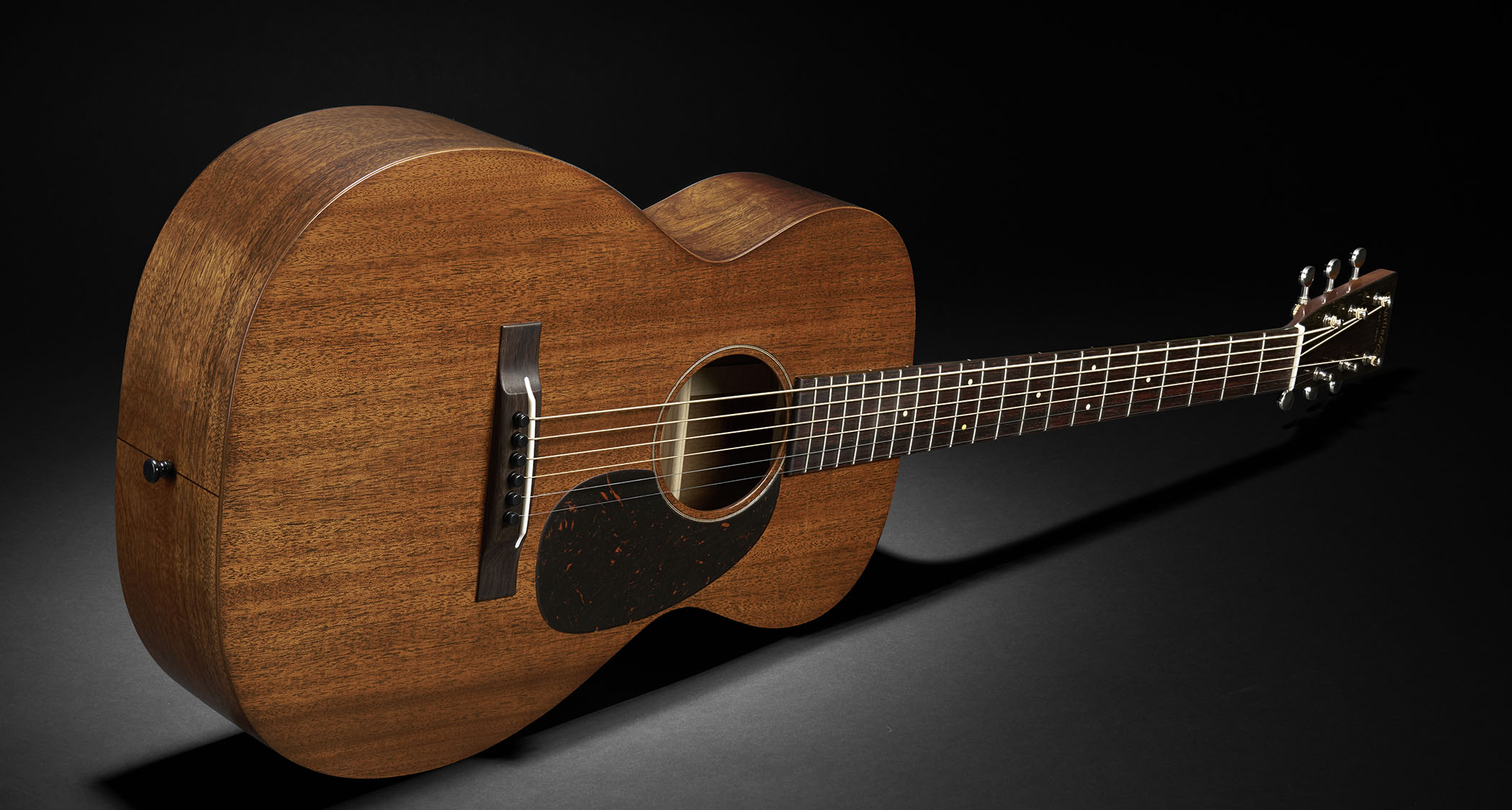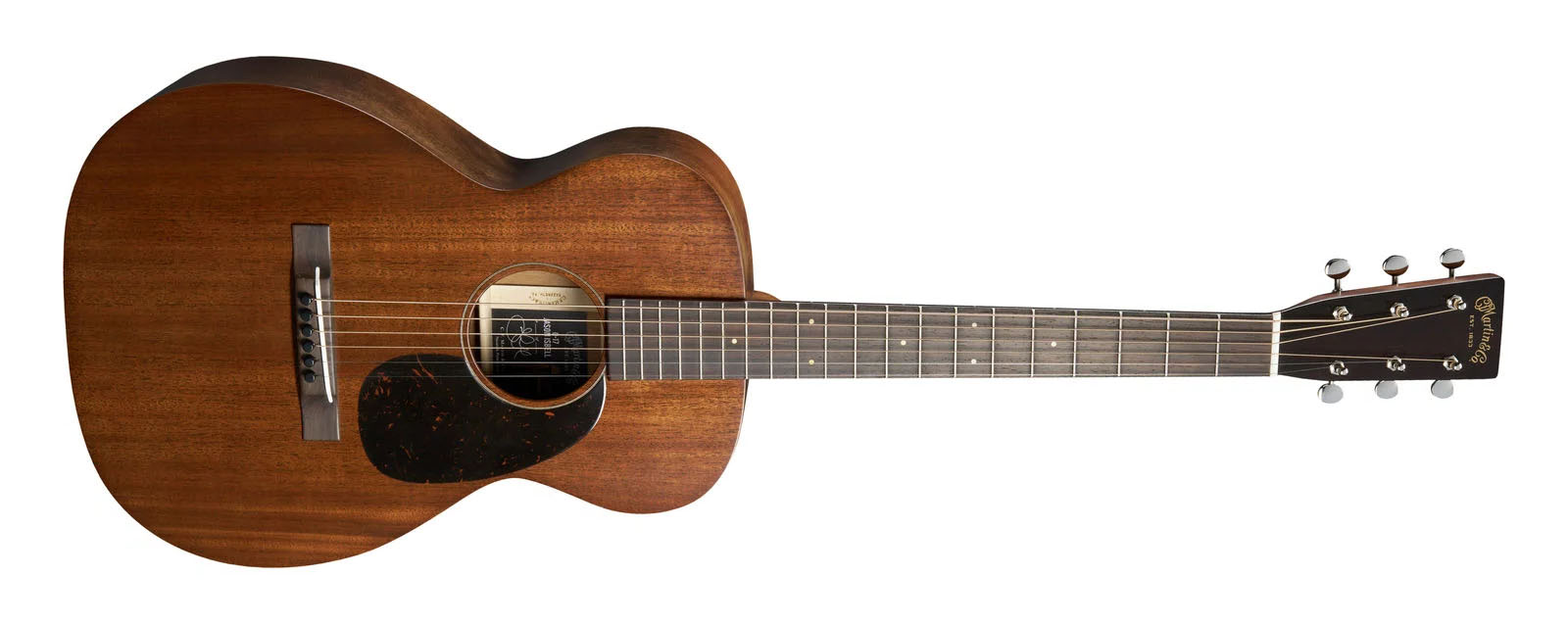“All my new acoustic guitars get to listen to OutKast for about 40 hours the first week they’re in the house”: Jason Isbell shares unorthodox tone tip for new acoustics as he unveils not one but two signature Martins – and a set of strings
The Jason Isbell 0-17 is a stunning replica of his 1940 model he used on Foxes In The Snow, and if that holy grail limited edition model is too pricey, his 0-10E Retro might be just the thing

Jason Isbell has teamed up with Martin once more for a pair of signature acoustic guitars, and a set of artist series acoustic guitar strings, and there’s something for the high-end collector and the regular strummer alike.
The headline act here is the Jason Isbell 0-17, an all sinker mahogany 14-fretter featuring a Brazilian rosewood fingerboard that is a replica of the serial Grammy-winning singer-songwriter’s 1040 0-17 that you can hear all over his latest studio album, Foxes In The Snow. It is a beaut.
But at $4,999 and limited to just 50 units worldwide (the label in the soundhole is signed by Isbell), it is not for everyone.
That’s where the 0-10E Retro comes in. It’s the spit of its super-premium sibling, and it’s made of all-solid mahogany, retailing at a more approachable (but not cheap per se) £1,069/$1049.
Not bad. And you get the onboard Martin E1 acoustic guitar pickup system – with the onboard guitar tuner – and everything you would need to play a gig. Isbell says one of the non-negotiables with this acoustic electric guitar’s design was that it should be an instrument you won’t outgrow.



“If you’re a beginner player, a guitar this size and the shape works for you because it’s easy to play, but the more advanced you get as a guitar player, the guitar still works because it’s easy to control,” he says.
Furthermore, it is a guitar that does not get in your way. As Isbell notes, there are enough challenges when it comes to making a record, or even writing a song.
Want all the hottest music and gear news, reviews, deals, features and more, direct to your inbox? Sign up here.
“A guitar like this meets the artist criteria that the instrument can’t be the challenge. The quality of the instrument should not be the challenge,” he says. “What the guitar should be is an extension of your own physical self, and that doesn’t necessarily mean that you play it well enough to where it feels like you’re tying your shoes, but it can mean that you play it well enough to where you don’t notice it after a while.”


Isbell says this state of semi-consciousness is when the songwriting magic starts to happen. He just plays and plays a riff or motif over and over and then it comes to him. “For that to happen, I don’t need to be interrupted by the quality of the instrument,” he says. Quite so.
Other key specs? Well, the 0-10E has open-gear nickel tuners, a 24.9” scale, a 44.45” nut width, the “select hardwood” neck that you would expect from Martin at this price with a Performing Artist profile and a High Performance Taper.
It’ll be a crowd-pleasing, mainstream feel. As Isbell promises, it’ll play easy, with its small-bodied concert-sized acoustic proportions not getting in the way.
The Jason Isbell 0-17, as you might imagine, is a little bit more involved. It shares that sort of simple aesthetic – it looks like a no-brainer for Delta blues and folk, designed for putting some vintage acoustic sounds to your open chords and fingerstyle arrangements. But putting this together was no gimme. The neck itself is a work of engineering. And Isbell says it matches his original 1940 model exactly.


“I can’t really feel a difference. And I know that was not an easy thing for Martin to do because they were all handmade, obviously, back in those days,” he says. “And this one gets sharper. It’s the slightest V, but down here, there’s really none of it at all, and then it gets sharper as it goes up the neck.
“So I think that that was probably a beast for them to recreate in the Martin factory, but they did a beautiful job of it. It’s a very simple guitar to look at and to play, but certainly not simple to put together.”
And Martin dug out the good stuff for it. The Brazilian rosewood fingerboard and matching bridge is where a lot of your money is going here. Brazilian rosewood is thin on the ground. There is not much left of it in circulation, so little wonder Isbell is so pleased to see it on his guitar.
Why is Brazilian rosewood better than the more commonly found Indian rosewood? As Isbell says, it’s darker, and it might be just be an aesthetic preference – can anyone, honestly, hear the difference between Brazilian and Indian rosewood on a fingerboard, surely, not. But it sure looks the part.
“That actually the fact that Martin was able and willing to do that for these guitars makes me really, really happy,” he says. “And the price point of this guitar, I don’t know if it’s the least expensive acoustic you can get with Brazilian rosewood on it, but it’s certainly one of them. So that’s going to make it more collectable.”
Jason Isbell also reveals that he has a strange ritual that he puts all of his new acoustic guitars through. It’s like an initiation ceremony. He comes in, he takes them out of the guitar case, and he places them in front of his hi-fi system’s speakers. Then he blasts them with hip-hop.
No, seriously, this is what he does. He does not elaborate as to the tonal benefits of this, whether this is a sort of ancillary torrefaction process that further ages the guitar, drying out the wood, helping its tone mature, but we like the sound of this anyway – and are intrigued to try this home.
We might try it with Illmatic or Liquid Swords but your favourite hip-hop record should work similarly.
I recommend putting it in front of a couple of stereo speakers when you leave the house and turn it up really loud
“I recommend putting it in front of a couple of stereo speakers when you leave the house and turn it up really loud,” explains Isbell. “I normally use, like, OutKast or something, just so when I come home, OutKast is playing on the stereo – it makes me happy. But all the guitars, all my new acoustic guitars get to listen to Outkast for about 40 hours the first week they’re in the house.”
There you have it. Maybe it gets the soundboard going, too, with that aged sinker mahogany top buttressed by scalloped Adirondack spruce bracing, and all those good vibrations. Our tone tip? Just keep it in good working order and remember that a good set of strings can make all the difference.
These guitars ship with Isbell’s new signature set of 12-54 Martin Era treated phosphor bronze strings, which have the patented Lifespan treatment, but with the “more traditional SP core construction.
Find out more over at Martin. Jason Isbell's Foxes In The Snow is out now via Southeastern.
Jonathan Horsley has been writing about guitars and guitar culture since 2005, playing them since 1990, and regularly contributes to MusicRadar, Total Guitar and Guitar World. He uses Jazz III nylon picks, 10s during the week, 9s at the weekend, and shamefully still struggles with rhythm figure one of Van Halen’s Panama.
You must confirm your public display name before commenting
Please logout and then login again, you will then be prompted to enter your display name.



